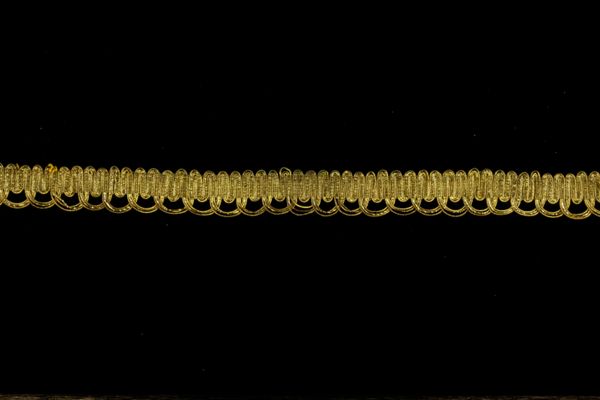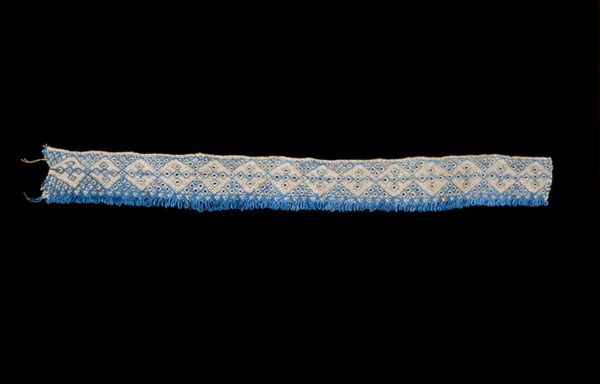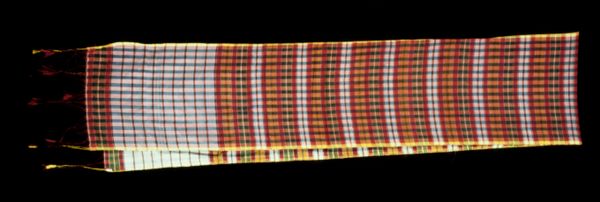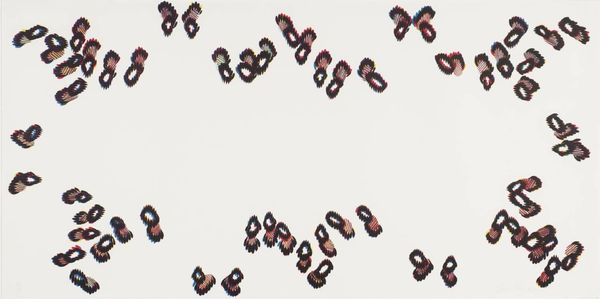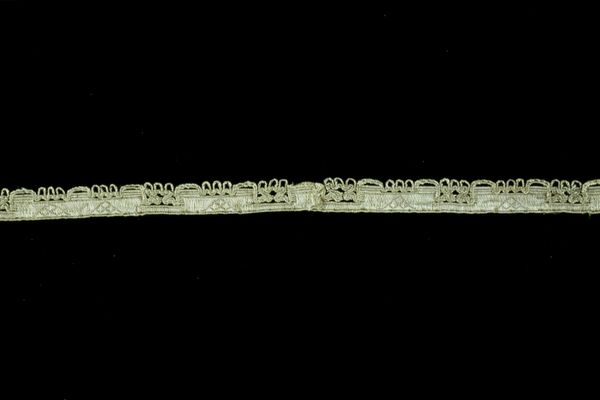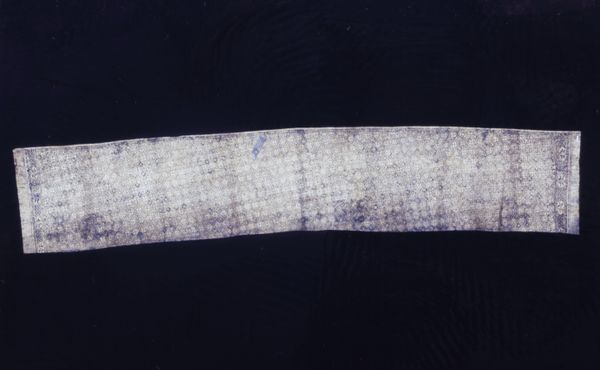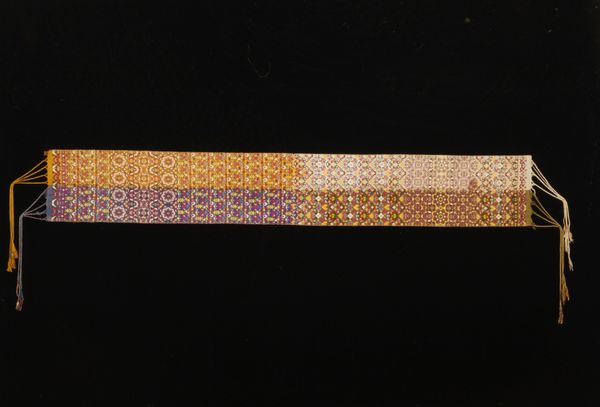
fibre-art, weaving, textile
#
fibre-art
#
asian-art
#
weaving
#
textile
#
geometric
Dimensions: 318.8 × 7 cm (125 1/2 × 2 3/4 in.)
Copyright: Public Domain
Editor: We're looking at a pair of Ceremonial Waist Sashes, or "ikak pinggang," made by the Minangkabau people around the 19th century. They're weavings, textiles, really long and thin... I’m struck by how geometric they are, almost like a coded message. What do you see in these sashes? Curator: I see echoes of ancestral memory woven into each thread. The Minangkabau are renowned for their complex social structures and deep respect for tradition. These sashes, far from being mere decoration, served as powerful visual symbols. Look closely at the geometric motifs. Editor: I notice diamond and cross shapes repeated throughout the weaving. Curator: Exactly. Those shapes might represent ideas of interconnectedness or social status within the community. Visual symbols tend to take root over generations. Have you ever wondered how certain patterns become associated with specific families or regions? Editor: That’s a really good question. So the repeating patterns, could they signify lineage or tell a story about the wearer? Curator: It's plausible. And think about the act of weaving itself. It demands precision, patience. Each knot and color choice contributes to a narrative understood by those within the culture. This repetition fosters shared cultural memory. These aren’t just pretty textiles; they’re historical documents, of a kind. Editor: I guess I hadn't thought about how much cultural weight a simple waist sash could carry. It is really fascinating. Curator: Precisely! It’s amazing how objects, like these sashes, bridge the gap between the past and present. Every design choice communicates deeper meaning. Editor: Thank you for expanding my understanding, it's inspired me to appreciate this weaving in a different light!
Comments
No comments
Be the first to comment and join the conversation on the ultimate creative platform.



